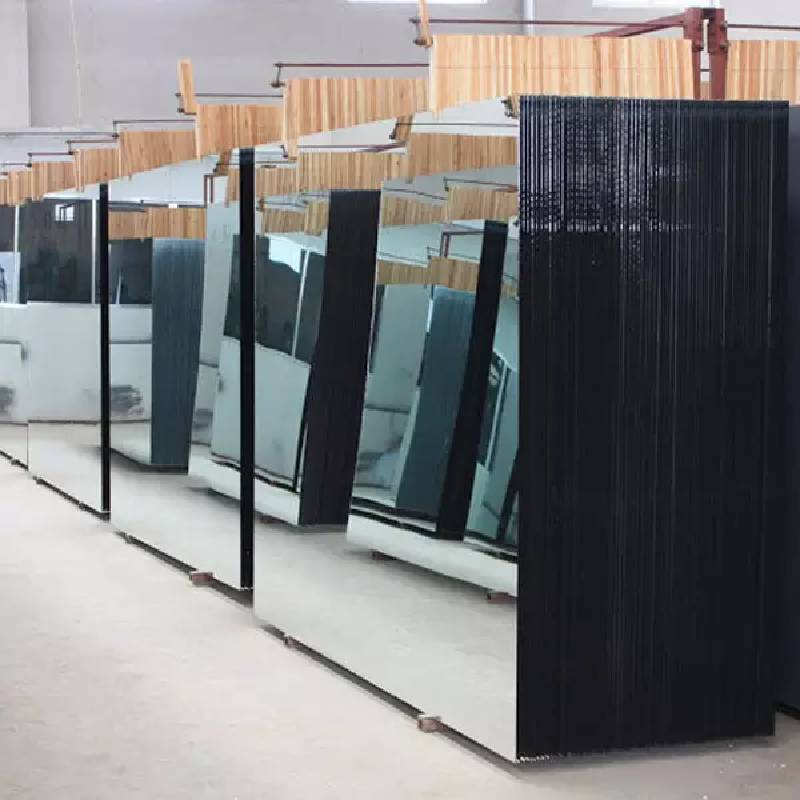The Silver Mirror Material A Reflection on Beauty and Functionality
In the world of materials, the silver mirror stands out as a unique amalgamation of beauty and functionality. Renowned for its lustrous surface and reflective qualities, silver mirror material has been a staple in various fields, including art, interior design, optics, and technology. This article delves into the characteristics, applications, and implications of silver mirror materials, showcasing why they remain relevant in both contemporary and traditional settings.
Characteristics of Silver Mirror Material
Silver mirror material traditionally consists of a thin layer of metallic silver deposited on glass or plastic substrates. The process of creating a silver mirror involves a technique called silvering, where a silver nitrate solution is applied, and the silver is chemically reduced to form a thin, reflective coating. This process not only gives the mirror its reflective quality but also enhances its durability and resistance to tarnishing when treated correctly.
The visual appeal of silver mirrors stems from their ability to offer a clear and bright reflection. Compared to other reflective materials, silver mirrors provide superior color accuracy and minimal distortion, making them the preferred choice for professionals working in fields that require precision, such as photography and film production. Furthermore, the high reflectivity of silver encourages the creation of expansive, brighter environments, lending itself elegantly to both practical applications and aesthetic pursuits.
Applications of Silver Mirror Materials
The applications of silver mirror materials are as diverse as they are fascinating. In the realm of interior design, silver mirrors serve not only as functional objects but also as artistic focal points. Designers often use mirrors to create an illusion of space or to enhance the room's lighting. Large, ornate silver mirrors are commonly found in hallways and living rooms, reflecting both natural and artificial light to create an inviting atmosphere.
silver mirror material
In technology, silver mirrors play a crucial role in various optical devices, including telescopes, microscopes, and lasers. Their reflectivity allows for optimal performance in capturing and magnifying images. The scientific community constantly seeks new ways to improve the longevity and efficiency of silver mirrors, driving research into protective coatings and alternative materials that maintain the benefits of silver while improving durability.
Moreover, in the field of solar energy, silver mirrors have made a significant impact. Concentrated solar power (CSP) systems often utilize large, reflective surfaces to harness sunlight and convert it into energy. The efficiency of these systems largely depends on the quality of the reflective materials used, making silver mirrors a vital component in the drive towards sustainable energy solutions.
The Cultural Significance of Silver Mirrors
Beyond their practical uses, silver mirrors hold cultural significance across various societies. Throughout history, mirrors have been associated with vanity and introspection, often depicted in literature and art as symbols of self-reflection and truth. The silver mirror's ability to reflect not just images but also light and beauty makes it an enduring motif in human expression.
In contemporary art, artists often explore the concept of reflection, both literal and metaphorical, using silver mirrors to engage viewers in a dialogue about perception and reality. By incorporating reflective materials in their work, artists challenge observers to examine their relationship with their surroundings and encourage introspection about identity and existence.
Conclusion
The silver mirror material is much more than a simple reflective surface; it embodies a rich blend of art, science, and cultural significance. From its timeless beauty to its essential role in technology and design, silver mirrors continue to inspire, captivate, and function as indispensable components of modern life. As innovations in materials science evolve, the legacy of the silver mirror will undoubtedly adapt, reflecting the changing landscapes of both our environment and our creativity. Whether we gaze into a silver mirror for practical purposes or philosophical musings, we are reminded of the intricate relationship between humanity and the materials that shape our experiences.
 Afrikaans
Afrikaans  Albanian
Albanian  Amharic
Amharic  Arabic
Arabic  Armenian
Armenian  Azerbaijani
Azerbaijani  Basque
Basque  Belarusian
Belarusian  Bengali
Bengali  Bosnian
Bosnian  Bulgarian
Bulgarian  Catalan
Catalan  Cebuano
Cebuano  Corsican
Corsican  Croatian
Croatian  Czech
Czech  Danish
Danish  Dutch
Dutch  English
English  Esperanto
Esperanto  Estonian
Estonian  Finnish
Finnish  French
French  Frisian
Frisian  Galician
Galician  Georgian
Georgian  German
German  Greek
Greek  Gujarati
Gujarati  Haitian Creole
Haitian Creole  hausa
hausa  hawaiian
hawaiian  Hebrew
Hebrew  Hindi
Hindi  Miao
Miao  Hungarian
Hungarian  Icelandic
Icelandic  igbo
igbo  Indonesian
Indonesian  irish
irish  Italian
Italian  Japanese
Japanese  Javanese
Javanese  Kannada
Kannada  kazakh
kazakh  Khmer
Khmer  Rwandese
Rwandese  Korean
Korean  Kurdish
Kurdish  Kyrgyz
Kyrgyz  Lao
Lao  Latin
Latin  Latvian
Latvian  Lithuanian
Lithuanian  Luxembourgish
Luxembourgish  Macedonian
Macedonian  Malgashi
Malgashi  Malay
Malay  Malayalam
Malayalam  Maltese
Maltese  Maori
Maori  Marathi
Marathi  Mongolian
Mongolian  Myanmar
Myanmar  Nepali
Nepali  Norwegian
Norwegian  Norwegian
Norwegian  Occitan
Occitan  Pashto
Pashto  Persian
Persian  Polish
Polish  Portuguese
Portuguese  Punjabi
Punjabi  Romanian
Romanian  Russian
Russian  Samoan
Samoan  Scottish Gaelic
Scottish Gaelic  Serbian
Serbian  Sesotho
Sesotho  Shona
Shona  Sindhi
Sindhi  Sinhala
Sinhala  Slovak
Slovak  Slovenian
Slovenian  Somali
Somali  Spanish
Spanish  Sundanese
Sundanese  Swahili
Swahili  Swedish
Swedish  Tagalog
Tagalog  Tajik
Tajik  Tamil
Tamil  Tatar
Tatar  Telugu
Telugu  Thai
Thai  Turkish
Turkish  Turkmen
Turkmen  Ukrainian
Ukrainian  Urdu
Urdu  Uighur
Uighur  Uzbek
Uzbek  Vietnamese
Vietnamese  Welsh
Welsh  Bantu
Bantu  Yiddish
Yiddish  Yoruba
Yoruba  Zulu
Zulu 

